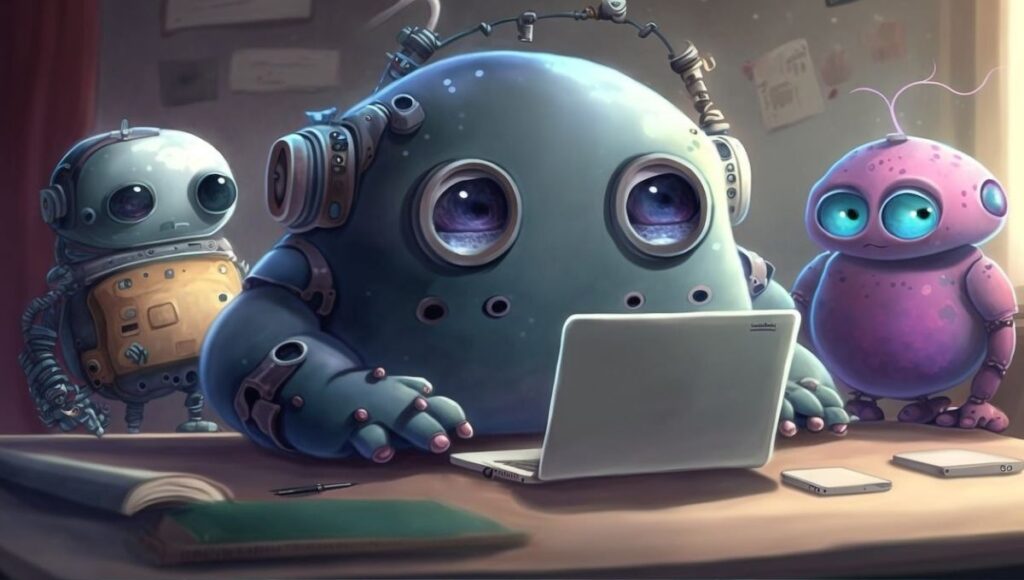ChatGPT Optimized Language Models have changed the way we use technology by letting computers understand and write text that sounds like it was written by a person. GPT stands out as one of the best examples of conversational AI, which is meant to let people have normal, meaningful conversations with computers. ChatGPT is a strong tool that uses deep learning to understand, process, and react to text inputs. It is an important part of current systems that understand language.
Imagine a world where your digital helper not only knows what you want it to do but also has deep talks with you, giving you personalized help and company. So says ChatGPT, where every conversation feels normal and is made to fit the user’s wants. ChatGPT Optimized Language Models change the way we talk to each other and work together by making language models work better for conversation. Businesses and individuals can benefit from this.
As we learn more about ChatGPT optimization, we find a lot of different strategies and methods that can be used to improve the quality of conversations and the user experience. The process of improving ChatGPT is both interesting and important. It involves making small changes to models to work better in certain areas and adding more data to help the models understand what’s going on in the context better. Read on to learn how ChatGPT is changing the way people talk to each other and opening up new ways for people and machines to connect.
What is ChatGPT?

ChatGPT is a cutting-edge language model created by OpenAI to help people and computers have natural, interesting talks. This AI-powered system uses advanced deep learning algorithms to read and write text in a way that sounds like a chat between two people. ChatGPT learns to understand context, pick up on subtleties, and respond in a way that makes sense by handling huge amounts of written data. This makes it easier for it to connect with users naturally.
How ChatGPT Works?
Neural network design is at the heart of ChatGPT, and for text creation tasks, it especially uses transformer-based models. For ChatGPT to understand language and meaning, it learns from very large datasets in a process called pre-training. After that, methods for fine-tuning are used to make the model fit certain dialogue situations or areas, making it more flexible and useful in talks.
OpenAI’s ChatGPT Overview

OpenAI’s ChatGPT is a big step forward in the field of natural language processing (NLP). It gives businesses and developers a flexible way to add talking AI to a wide range of apps. ChatGPT’s easy-to-use interface and powerful API let developers make chatbots, virtual helpers, and other dialogue-based systems that make the user experience better.
More about ChatGPT and Its Technology
ChatGPT’s technology is based on cutting-edge deep learning techniques, such as self-attention systems and neural networks with many layers. These parts make it possible for ChatGPT to find long-range relationships in text, which helps it understand and respond more accurately. ChatGPT also keeps getting better through ongoing research and development, which makes sure that its features stay on the cutting edge of AI innovation.
Evolution of ChatGPT Optimized Language Models
Language models have changed over time, from simple rule-based systems to complex neural networks like ChatGPT. This shows how AI and NLP studies are always getting better. Early language models like ELIZA and ALICE paved the way for breakthroughs in transformer-based models that changed the way we understand real language. Language models are getting better at catching the subtleties of human speech with each update. This marks the start of a new era of interactive AI technologies.
The Magic Behind Language Model Optimization

Language model improvement means making models like ChatGPT work better and do more in conversation settings by improving their performance and abilities. This process makes it easier for the model to understand what’s going on and come up with appropriate answers. By carefully fine-tuning and adding more data, the model’s accuracy and speed are greatly enhanced.
Introduction to Language Model Optimization
Language model optimization is a process with many parts that use different methods to make models work better. The process begins with pre-training, where the model utilizes a vast amount of text data to comprehend language in general. Following that, fine-tuning adjusts the model, which has already learned certain conversation-related tasks or areas, optimizing its performance in dialogue situations.
The Role of Pre-Training and Fine-Tuning
Pre-training gives the model basic language information, the basis for language model improvement. It gives the model a lot of different literary situations to read, which helps it learn the natural patterns and structures of language. Fine-tuning, on the other hand, changes the model that has already been taught to fit certain discussion tasks. This makes it more sensitive and useful in talk.
Challenges in ChatGPT Optimizing Language Models
Even though it has a lot of promise, making language models like ChatGPT work better for conversation isn’t easy. One big problem is that the model needs a lot of different kinds of data to be trained and fine-tuned properly. Another big problem is making sure the model is used in a decent and accountable way. AI systems need to follow standards of fairness, openness, and responsibility. To get past these problems, you need to come up with new ideas and keep improving your efficiency methods.
The Process of Fine-Tuning ChatGPT

Improving ChatGPT involves modifying the model already trained to handle specific types of conversation. During this step, the model undergoes retraining on a smaller sample tailored to the specific application in use. ChatGPT learns to select important information and come up with answers that make sense in the given situation by fine-tuning.
Choosing the Right Dataset for Fine-Tuning
Picking the right set is very important for getting ChatGPT to work better. To ensure the model learns the right patterns and words, the dataset should represent the target topic or conversation setting well. To avoid bias and make the model more useful in real life, the dataset should also be fair and include a lot of different types of data.
Techniques for Improving Model Performance
There are several ways to make fine-tuned ChatGPT models work better. Data enhancement techniques, like rewriting and back-translation, can make the training data more varied and the model more stable. Regularization methods, like dropout and weight decay, help keep models from fitting too well and make them more general.
In-depth Look into ChatGPT’s Architecture
The design of ChatGPT comprises many layers of transformers, each responsible for handling and contextualizing raw text. The model utilizes self-attention processes to identify long-range relationships and hierarchical patterns in the data. For added security, ChatGPT uses relative encodings to keep the order of the tokens in the input.
Key Components and Their Contribution

Attention methods, feed-forward networks, and layer normalization are some of the most important parts of ChatGPT. They all work together to make language learning and production easier. Attention mechanisms help the model focus on important parts of the input, and feed-forward networks change and handle the data. Layer normalization makes sure that training is stable and speeds up the model’s convergence.
Enhancing ChatGPT Optimized Language Models Safety
To reduce risks and harms, it is very important to make sure that language models like ChatGPT are safe. Techniques like adversarial training and robustness testing can help find holes in the model and fix them. Safety limits and rules can also be used during training to encourage responsible AI development.
Balancing Model Limitations and Capabilities
To make ChatGPT work better, you need to find a mix between what it can and can’t do. The model excels at producing text that mimics human writing, but it may still harbor biases or provide incorrect answers. To address these issues, constant checking, evaluation, and improvement of the model’s training data and methods are necessary.
Ethical Considerations in Language Model Optimization
A lot of thought goes into optimizing language models, and ethical problems like bias, fairness, and privacy are very important. To maintain fairness, developers must ensure that ChatGPT learns from samples that encompass a wide variety of data types. Implementing open and responsible AI practices can also help build trust and faith in the model’s use.
Adapting to Real-World Usage

In the real-world application of ChatGPT, it’s crucial to consider factors such as user preferences, site requirements, and privacy concerns. Before deploying the model in real-life scenarios, fine-tuning is necessary to optimize its performance across various situations.
Scaling ChatGPT for Production
To prepare ChatGPT for production, optimizing its systems and resources is necessary to handle a large-scale rollout. This could mean using cloud computer tools, speeding up model reasoning, and setting up data processes that work well.
Addressing Biases and Ensuring Fairness
Getting rid of flaws in ChatGPT is important to make sure that conversations with users are fair and equal. Some methods, like bias detection, debiasing algorithms, and diverse dataset editing, can help reduce biases and make conversation generation more fair.
Customization and Personalization of Language Models
Making changes ChatGPT lets developers and businesses change the model to fit different use cases and user interests. Personalization methods like user profiles, feedback mechanisms, and answers that are appropriate for the situation improve the model’s capacity to provide relevant and interesting interactions.
Merging Text with Other Modalities
Conversational AI conversations become more interesting and relevant when mixing text with other modes. By using both audio and visible cues along with text, ChatGPT can better understand and react to questions and orders from users.
Incorporating Images, Videos, and Audio
Adding pictures, movies, and sound to ChatGPT makes it more useful than just text-based conversation. This lets users connect with the model in a variety of media forms, which improves the experience and keeps users interested.
Applications of Optimized Language Models
Optimized language models, such as ChatGPT, are used in a wide range of fields and areas, changing the way companies talk to their customers and users.
Chatbots and Virtual Assistants
Chatbots and virtual helpers that are driven by ChatGPT provide personalized and quick customer service by helping users with their questions and chores efficiently and effectively.
Improving Customer Support Experiences
Businesses can improve their customer service by using ChatGPT to help users in a fast, accurate, and useful way based on their situation.
Revolutionizing Content Generation
ChatGPT can write text that makes sense and fits the situation, which makes it a useful tool for creating content for many types of media, such as blogs, stories, marketing copy, and social media posts.
Evaluating and Benchmarking Language Models
When evaluating and measuring language models like ChatGPT, you compare their performance against predefined metrics and benchmarks. This ensures that the quality and usefulness of models can be objectively measured across a wide range of tasks and domains.
Objectively Assessing Language Model Quality
To objectively judge the quality of a language model, you have to look at things like the created text’s correctness, flow, consistency, and importance. Researchers and developers can find out what works and what doesn’t in a model’s performance and decide which areas need the most work by using strict review methods.
The Future of Language Model Optimization
The future of language model optimization is full of interesting ways to improve AI and the way people and machines connect. Language models like ChatGPT are likely to get smarter, more useful, and better able to fit a wider range of situations as technology keeps improving.
Advancements in Language Model Architectures
In natural language processing study, improvements in language model designs drive new ideas and success. Researchers are always looking for new ways to make models work better and more efficiently. These methods range from simpler transformer-based models to more complicated and specialized designs.
Potential Societal Impacts and Concerns
Although language model optimization has the potential to change many fields and businesses, it also brings up important moral and social issues. To ensure the responsible development and usage of AI, it’s essential to carefully consider and proactively address issues such as bias, fairness, privacy, and the dissemination of false information.
Conclusion–ChatGPT Optimized Language Models
The improvements in Chat GPT improving language models for conversation are a big step forward for AI technology. Using deep learning and natural language processing, ChatGPT has changed how we talk to computers, making chats more natural, intuitive, and tailored to each person. As we keep improving and refining these language models, it’s clear that ChatGPT can change many fields and businesses.
As time goes on, it is important to put social concerns first and think about how Chat GPT improving language models for conversation might affect society. We can get the most out of ChatGPT while minimizing its risks and harms by encouraging openness, responsibility, and participation in the creation and use of AI.

Hey, I’m Akhtar Rasool a blogger from Lahore Pakistan who’s all about the marketing game. Reading and writing fuel my creative side, and I’ve found success in the blogosphere. Let’s connect through words and explore the exciting world where content meets strategy! 🌟








